Ultra-low-cost smart meter ready for farmers and agricultural partners
Australian technology startup, Gasbot has ignited the liquefied petroleum gas (LPG) industry, with an ultra-low-cost smart meter that’s giving near real-time visibility of tank storage levels to blue-chip utilities across the globe. Now, Gasbot is seeking partners to inform its development roadmap for the agriculture sector – and put its weather-proof and hack-resistant Agbot to work for every farmer.
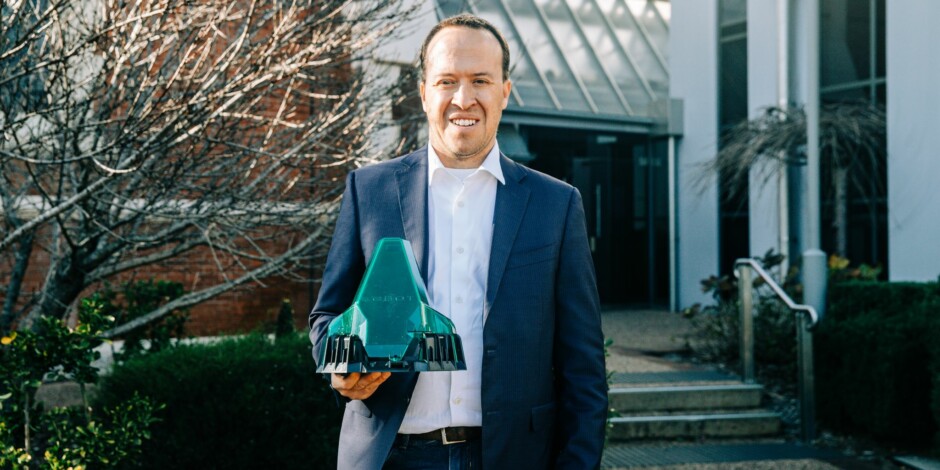 Gasbot Founder and Managing Director, Philip Livingston launches their latest product, Agbot at the 400M AgriFood Innovation Forum in Toowoomba on 13 July, 2022. Photography by Anna Tomlinson
Gasbot Founder and Managing Director, Philip Livingston launches their latest product, Agbot at the 400M AgriFood Innovation Forum in Toowoomba on 13 July, 2022. Photography by Anna Tomlinson
What started as a discussion about cold showers due to empty gas bottles has, in three short years, become a market-leading startup that’s achieving incredible global sales. Gasbot’s asset-to-cloud remote monitoring service is used by blue chip utilities to monitor gas supplies in Australia, the Americas and Europe – drawn in by the compelling customer satisfaction and operational efficiencies it delivers.
Founder and Managing Director, Philip Livingston explained, “By giving utilities near real-time visibility of tank storages, Gasbot reduces ‘out of gas’ situations by over 90%. And it reduces unneeded truck rolls [to tanks that are still full] by roughly 80%. The return on investment is well within six months for a standard 10-year contract.”
“We’ve got 25,000 units deployed and a further 30,000 units contracted and awaiting deployment, providing reliable monthly income in a world where it’s hard to get that level of stability. That’s the bedrock we’re building on.”
That bedrock has emboldened Philip’s diversification into agriculture with Agbot – a versatile technology capable of answering the sector’s countless use cases for remote monitoring of inputs. And to drive its expansion into agriculture, Gasbot is seeking partners with a voice in agriculture to help drive uptake of the Agbot and maximise its value for farmers. Enquire here.
No frills approach to design delivers cost advantage
Remote monitoring of liquid storages isn’t new – with competitors already in market for both the LPG and agricultural sectors. What sets Gasbot apart is its development philosophy. “We address a problem by building the bare minimum needed to solve it: sensors, telemetry radios and a thin ‘data cleansing’ cloud layer.”
RELATED: How tech-stacks make life easier on-farm
“Competitors in the Internet of Things (IoT) space will typically build on platforms that are easy to code, but aren’t designed with the application in mind. At Gasbot, we’re coding on bare metal to deliver a device that’s designed – optimised – for the use case.”
The result is precision technology at a significantly lower price. “Our biggest LPG competitor [in Europe] sells a device for €60. We do it for €15,” said Philip.
This no-frills approach is necessary to bring Gasbot closer to its goal of unlocking mass adoption and the bots and injection moulds are manufactured in Australia, with sensors provided by global partners.
“We don’t want our tech limited to the top end of a market,” said Philip. “We want this to be a mass digitisation event in every vertical we move into. We’re building things that are economically viable – because that’s what moves the needle.”
Industry-led design process delivers device farmers want
With its extremely low price point, Agbot could shake up the increasingly crowded market for on-farm remote monitoring sensors. But it isn’t as easy as dropping the Agbot unit into a trough or diesel tank. To ensure product market fit, the team runs an intensive iterative design process centred around 360° feedback from farmers, technology integrators and customers. The result is a build that is 100% driven by industry.
RELATED: Testing agritech with farmers first, pays off
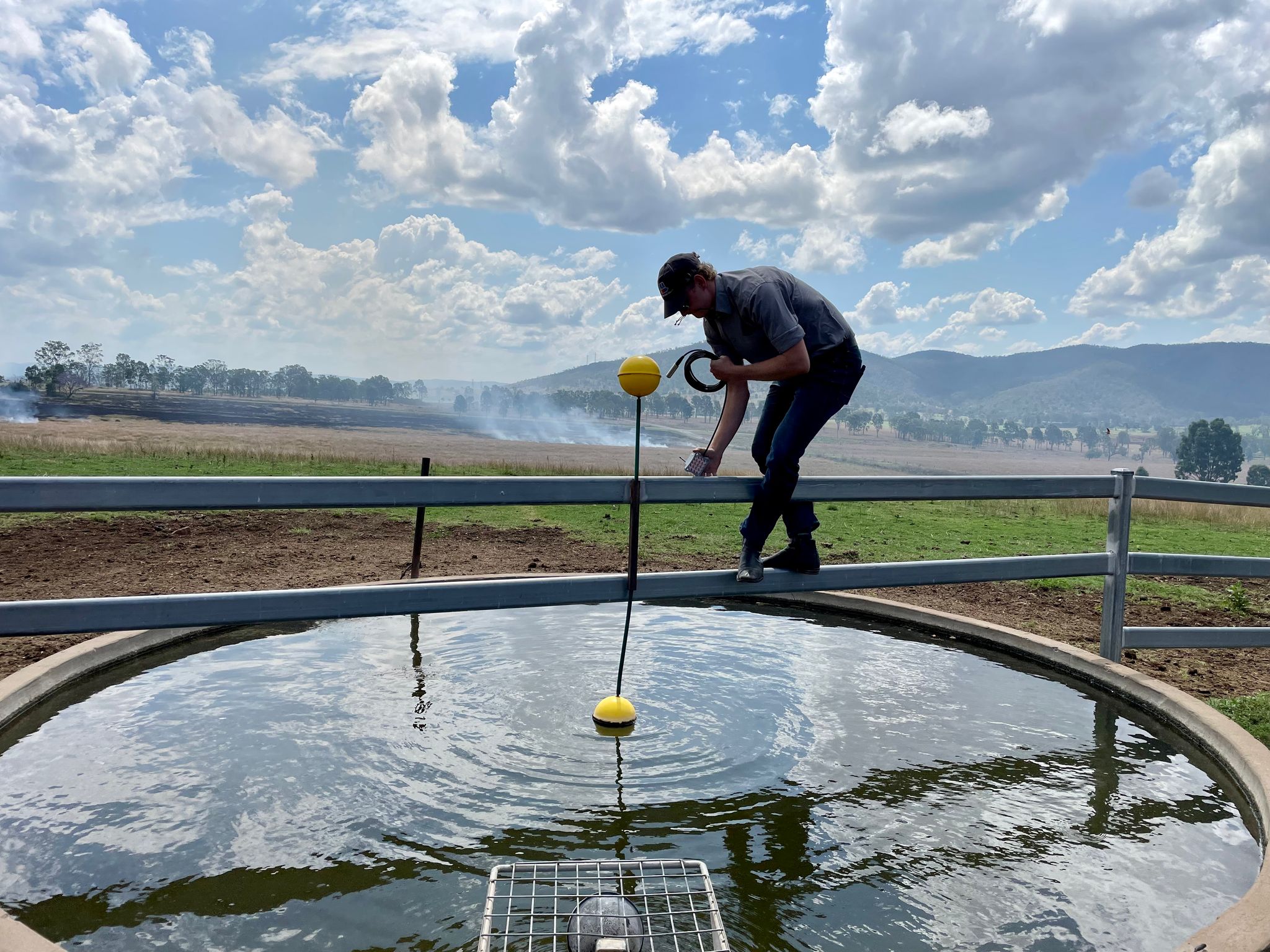
- Working in the agricultural sector and need a remote monitoring solution? Contact the Gasbot team here to identify your challenge and engage in Agbot’s development roadmap.
“Agbot has a cable management base to aid farmers in managing the depth at which they drop sensors, enabling integration direct to tank with no extra piping. Agbot supplies a broad range of lengths of its Teflon coated multi-fluid sensors from 3 metres to 60m for a variety of on-farm liquid applications.
“The Agbot unit has a clear cover so farmers can see spiders or snakes hiding inside, while also protecting the microsatellite antenna from bird strike. Agbot offers full API integration with an ever-expanding range of platforms, with consumers in full control of where they integrate their data streams.”
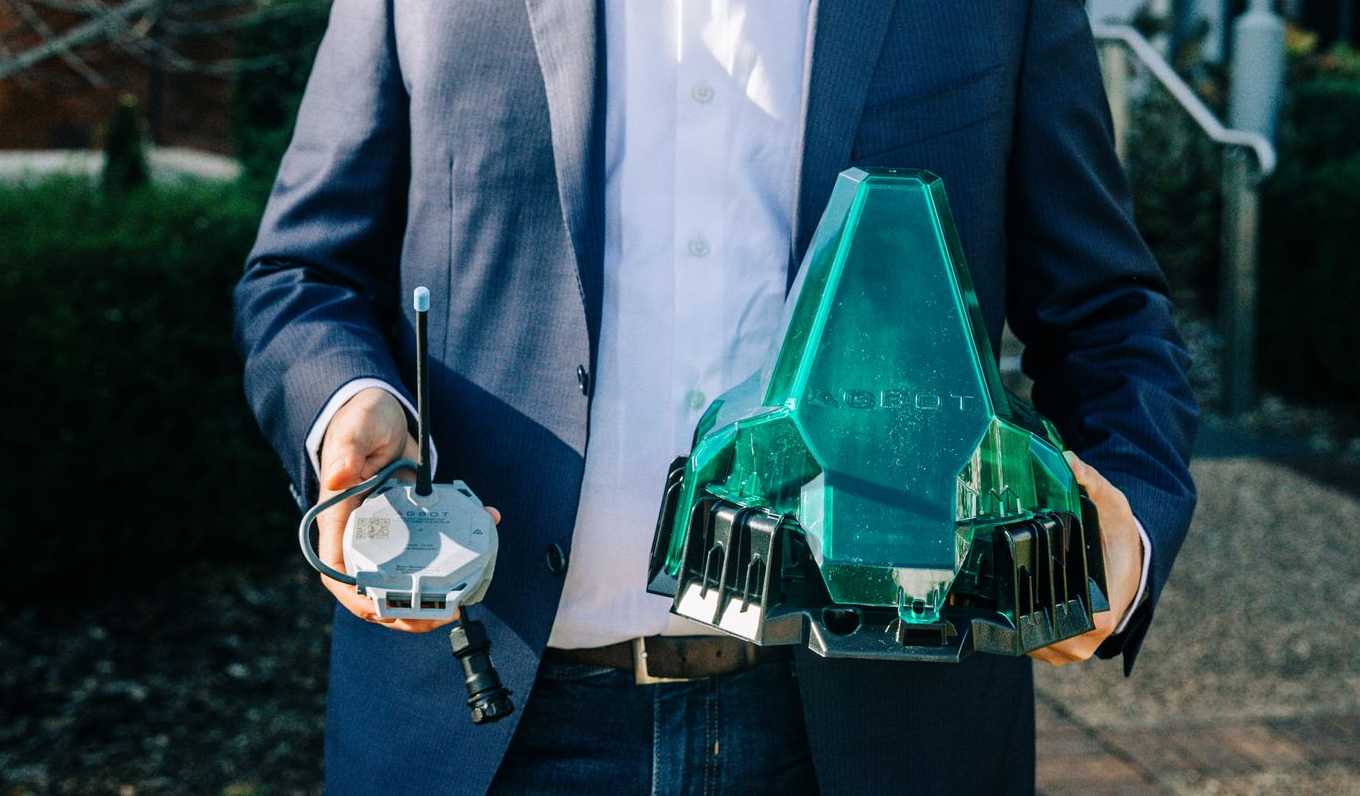
Unlike its competitors, Agbot doesn’t perform any analytics, allowing it to focus on its core function of data delivery. “Customers get an app and desktop dashboard that can alert them when an asset reaches a certain threshold.”
RELATED: Farm data and doing what’s right by the farmer
“We deliver data from an asset to the cloud, make sure that data is clean, and get it ready for import into whatever third-party integrations the farmer uses. Anything more cerebral than direct delivery is a distraction to us.”
One bot, many integrations:
- Water tanks
- Dams
- Diesel tanks
- Livestock troughs
- Liquid fertiliser
- Irrigation
Built to withstand weather, livestock – and hackers
Like its gas industry forebear, Agbot is built to cope with the harshest conditions. “It’ll withstand temperatures from -40 degrees to +80 degrees Celsius. And withstand impact: you can take a hammer to the bot and it’ll still work.”
So confident are the team that Agbot comes with an unlimited warranty on all parts when purchased through its Hardware as a Service (HaaS) model, directly from Agbot’s online store here. “If cattle bust any tops, or a sensor cable fails, we’ll replace them at no cost.”
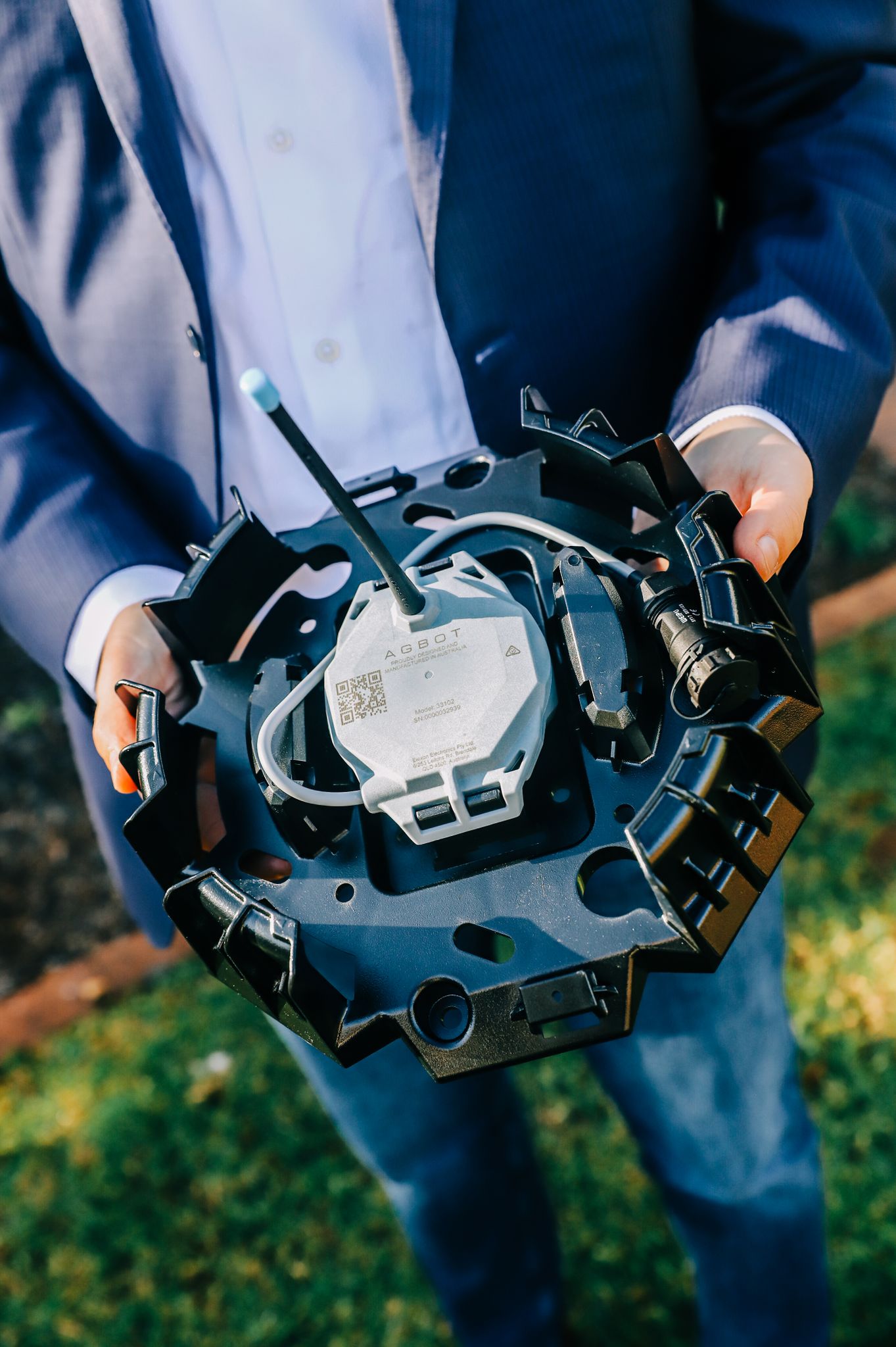
Beyond price and robustness, Agbot’s data integrity may be an even bigger selling point for hesitant agritech adopters. “We’re probably the only company currently servicing ag that gets ‘penetration tested,’ where a hacking team tries to infiltrate every aspect of our tech,” explained Philip. “Because we service energy utilities – firms that can be direct targets in geopolitical attacks – we could be a backdoor in. Every year, we’re rigorously tested to uncover vulnerabilities we might have missed. But we’ve never had any critical issues.”
- Want to buy an Agbot device? Units cost $600 including a mobile app and custom-built software, or purchase a subscription (Hardware-as-a-Service) for $20 per month, per bot. Online sales are now open here and are also available at selected Elders Rural Services Australia.
Early failures catalysed focus on efficiency
The Gasbot team have a laser-like focus on efficiency, not unlike their product development. “We call it ‘innovation velocity,’” explained Philip. “We build stuff with our own hands onsite, and whenever we build a product, we time how long it took us to build it. And then we improve that time.”
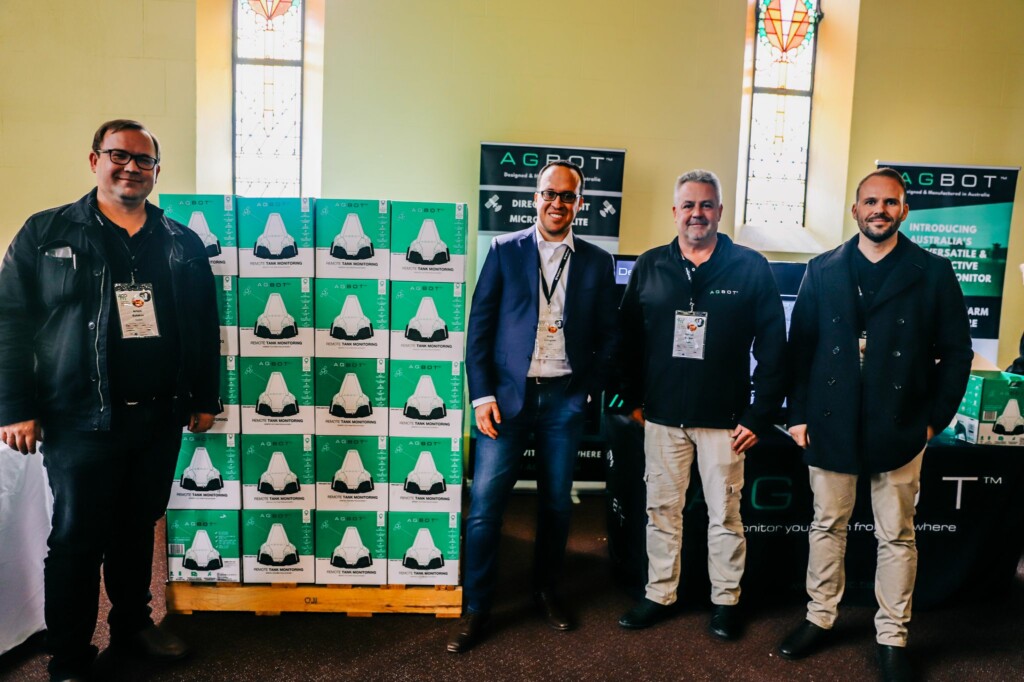
While competitors can spend years tick-tacking with offshore design and production teams before they release or update a product, by doing it all in-house, Gasbot’s timeframe is mere months. “Agbot didn’t exist other than as a concept in October 2021. We had it ready for shelves by April 2022.”
They’ve got innovation velocity down to a fine art now, but it wasn’t always the case. “We got here by failing a tonne,” reflected Philip. “Our first 4,000 Gasbot units cracked and broke. We’d under-designed the thickness of the shell. We’d chosen the wrong material. We underestimated how much the internal epoxy resin expanded with heat. And the labels fell off because the overseas supplier didn’t stick to spec.”
Gasbot solved that last problem themselves, by laser burning the label directly into the front cover instead. And it catalysed a new direction. “We were able to fix this situation so fast and save on the price point. It became a no brainer to just make everything ourselves right here in Australia.”
RELATED: Six agrifood startups selected for AgriFutures evokeAG. 2022 Startup Network
Gasbot is seeking agricultural partners to further its Agbot mission
With a growing annuity from blue-chip LPG contracts, Gasbot isn’t looking for just any partner to assist in delivering its extensive tech roadmap. “We’re itching to find an enduring connection to the ag community – partners who can help us think how the customer thinks,” explained Philip.
“We have this amazing tech that can translate ideas into products at a high velocity. What we need are partners to guide us in maximising its value to the many different use cases in the ag sector.”
Gasbot has been selected to participate in AgriFutures Australia’s evokeAG. 2022 Startup Network Program. Learn more about their partnership opportunity here, or visit Agbot’s online store here to learn more about the device.
Enjoyed this story? Want to learn more about the Asia Pacific region’s innovative agrifood tech ecosystem? Sign up for our newsletter here and receive fresh stories about global leaders, farmers, startups and innovators driving collaborative change.
